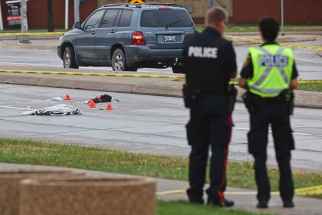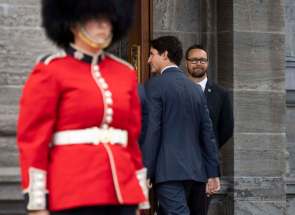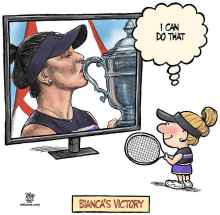Three-way left-of-centre battle a gift to vote-leaking Tories, election numbers reveal
Read this article for free:
or
Already have an account? Log in here »
To continue reading, please subscribe:
Monthly Digital Subscription
$0 for the first 4 weeks*
- Enjoy unlimited reading on winnipegfreepress.com
- Read the E-Edition, our digital replica newspaper
- Access News Break, our award-winning app
- Play interactive puzzles
*No charge for 4 weeks then price increases to the regular rate of $19.00 plus GST every four weeks. Offer available to new and qualified returning subscribers only. Cancel any time.
Monthly Digital Subscription
$4.75/week*
- Enjoy unlimited reading on winnipegfreepress.com
- Read the E-Edition, our digital replica newspaper
- Access News Break, our award-winning app
- Play interactive puzzles
*Billed as $19 plus GST every four weeks. Cancel any time.
To continue reading, please subscribe:
Add Free Press access to your Brandon Sun subscription for only an additional
$1 for the first 4 weeks*
*Your next subscription payment will increase by $1.00 and you will be charged $16.99 plus GST for four weeks. After four weeks, your payment will increase to $23.99 plus GST every four weeks.
Read unlimited articles for free today:
or
Already have an account? Log in here »
Hey there, time traveller!
This article was published 11/09/2019 (2284 days ago), so information in it may no longer be current.
When the smoke clears after most elections, political strategists, commentators and journalists rush to examine the voter turnout numbers so they can assess the tenuous state of our democratic system.
Voter turnouts in this country, and many other Western democracies, are perilously low and seem to be getting lower each and every time we go to the polls.
This election was no different. When the smoke cleared from Tuesday’s provincial general election, only 55.4 per cent of registered voters cast a ballot. That is two points lower than 2016 and the lowest mark since 2003 when 54.17 per cent of voters cast a ballot.
However, before the moaning and wailing starts in earnest, note that this time, the voter turnout metric is a bit misleading. In fact, depending on how you want to look at the numbers, this election actually represented a modest victory for the guardians of democracy.
Yes, voter turnout did go down as a percentage of total registered voters, but Elections Manitoba registered more voters for this election than ever before.

!function(e,t,s,i){var n=”InfogramEmbeds”,o=e.getElementsByTagName(“script”)[0],d=/^http:/.test(e.location)?”http:”:”https:”;if(/^/{2}/.test(i)&&(i=d+i),window[n]&&window[n].initialized)window[n].process&&window[n].process();else if(!e.getElementById(s)){var r=e.createElement(“script”);r.async=1,r.id=s,r.src=i,o.parentNode.insertBefore(r,o)}}(document,0,”infogram-async”,”https://e.infogram.com/js/dist/embed-loader-min.js”);
It has long been understood that voters lists do not capture all of the citizens who are eligible to vote. In a bid to improve the "completeness" of the voters list here, following the 2016 election Election Manitoba abandoned the traditional door-by-door enumeration in favour of new system that relied on information gathered from other government entities that register our existence: Manitoba Public Insurance, Manitoba Health, Vital Statistics and Elections Canada.
Largely as a result of that change in methodology, Elections Manitoba was able to add more than 80,000 people to the list of registered voters, an increase of more than 10 per cent over the 2016 election.
Unfortunately, that expansion of the permanent voters list — arguably the largest election-over-election increase in the province’s history — obscures what appears to be a significant increase in the number of votes cast this time.
Relying again on unofficial numbers, 472,575 Manitobans voted in the 2019 election. That is 28,714 or 6.5 per cent more votes than were cast in 2016 and the highest total since 1999.

!function(e,t,s,i){var n=”InfogramEmbeds”,o=e.getElementsByTagName(“script”)[0],d=/^http:/.test(e.location)?”http:”:”https:”;if(/^/{2}/.test(i)&&(i=d+i),window[n]&&window[n].initialized)window[n].process&&window[n].process();else if(!e.getElementById(s)){var r=e.createElement(“script”);r.async=1,r.id=s,r.src=i,o.parentNode.insertBefore(r,o)}}(document,0,”infogram-async”,”https://e.infogram.com/js/dist/embed-loader-min.js”);
When you focus more on the number of votes cast, and less on the turnout as a percentage of total registered voters, new and previously unseen dynamics from this election begin to become apparent.
Brian Pallister and the Progressive Conservatives were not really threatened in this election, even though they lost four seats from 2016. However, when you look at the distribution of votes, you can clearly see how there was a swell in anti-Tory sentiment that did not, because of a split of left-of-centre votes, translate into seats.
The Tories, overall, received 47 per cent of all votes cast, a level of support that translated into those 36 seats. However, their total vote haul is somewhat inflated given that the party gorges itself on huge pluralities in rural ridings. Overall, the PCs received 11,254 fewer votes than they got in 2016, a five per cent decline. Meanwhile, all other main parties in the election saw significant increases.
The NDP got 34,424 more votes in this election than in 2016, a 30 per cent increase in support that translated into an additional six seats. The Liberals (plus-4,963 or 7.9 per cent) and the Greens (plus-7,980 or 36 per cent) also saw significant gains although the Liberals won only three seats — down one from dissolution — and the Green party failed again to elect its first Manitoba legislator.

!function(e,t,s,i){var n=”InfogramEmbeds”,o=e.getElementsByTagName(“script”)[0],d=/^http:/.test(e.location)?”http:”:”https:”;if(/^/{2}/.test(i)&&(i=d+i),window[n]&&window[n].initialized)window[n].process&&window[n].process();else if(!e.getElementById(s)){var r=e.createElement(“script”);r.async=1,r.id=s,r.src=i,o.parentNode.insertBefore(r,o)}}(document,0,”infogram-async”,”https://e.infogram.com/js/dist/embed-loader-min.js”);
These increases in voter support did not translate into more seats for each party largely because they were competing against each other for roughly the same kind of voter. This split of the left-centre vote was a significant factor in helping the Tories win another majority mandate.
Vote-splitting among the NDP, Liberals and Greens — where the total for those three parties easily eclipsed the Tory total — largely helped the PCs hold on to seven of its Winnipeg seats: Assiniboia, Fort Richmond, McPhillips, Southdale, Rossmere, Riel and Radisson. That is not just the difference between a majority and minority; had voters been more strategic in those ridings, or there had been a collapse in the support of just a single one of the three parties, the Tories could have theoretically lost the election altogether.
The sub-narratives of this election aside, there is still reason to be concerned about the overall state of voter turnout. Even if the old system for enumeration had been used, and the list of registered voters had been only slightly higher than in 2016, turnout would not have gone above 60 per cent.
The new enumeration system also does not do anything about the inherent injustice of the first-past-the-post voting system that gave the Tories two-thirds of the seats in the legislature with only 47 per cent of the votes cast.
And it has absolutely no impact on the reality that while 2019 does represent a tick upwards in total votes, there are still fewer votes being cast in elections now than in any election in the 1990s and 1980s.
And one other thing. Just over 25 per cent of all the voters who were registered to cast ballots in this election got to decide which party would form government. Regardless of party stripe, that’s got to change.
dan.lett@freepress.mb.ca

Born and raised in and around Toronto, Dan Lett came to Winnipeg in 1986, less than a year out of journalism school with a lifelong dream to be a newspaper reporter.
Our newsroom depends on a growing audience of readers to power our journalism. If you are not a paid reader, please consider becoming a subscriber.
Our newsroom depends on its audience of readers to power our journalism. Thank you for your support.










